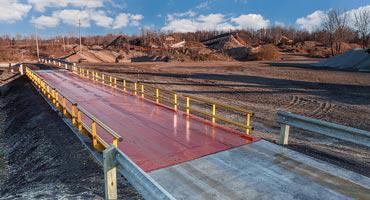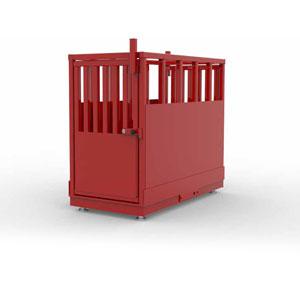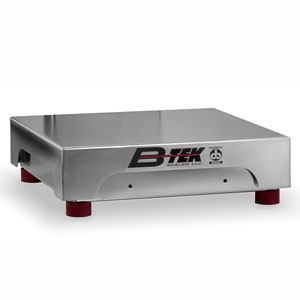The B-TEK Learning Center
Resources to help you scale your business with B-TEK.

A changing landscape and a new approach to decreasing downtime.
Downtime can be a serious threat to your customer's profitability. It's one of the most dreaded situations in any application. Not only are the items not getting weighed costing money, but so are the hours spent finding and servicing the issue. Living in a digital era, it's inexcusable to waste time on finding problems when there is so much data now readily available. While the scale industry has been slowly moving towards this direction, timely integration of digital technology is a must to meet the growing demands of profitability.
5 ways to improve weighing profitability:
1. Avoid time-wasting activities
It's important to attach value to your customer's time. How time is used to find, diagnose and solve problems has a huge impact on their bottom line.
It's no secret that technology can help keep on task and improve efficiency. Just imagine the amount of time it would take the customer to write a letter and mail it as opposed to sending an email. So why take the time to hook a voltage meter up to every load cell in a scale when there's a technology that pinpoints the problem and suggests fixes for the situation? The scale industry hasn't adopted this mindset quite as fast as other industries. Depending on the application, the necessity for digital integration may not appear to be a priority. While most industries eat and breathe data, the scale industry has not been empowered with that luxury until recent technological advancements.
2. Make the move towards efficiency
It's nearly impossible to fix a problem when the problem cannot be found, especially on a scale.
That's why developments in easy-to-read diagnostics, provided by digital technology, are so important. Anyone with the ability to read the indicator screen can utilize the technology to easily diagnose problems. The intent of integrating technology is to automate processes with the data available and develop a system where every step happens in the same digital space. Now, you can find the problem in a matter of minutes versus hours, and data is collected, analyzed and delivered in real-time.
Basic digital technology has been around in the scale industry for around a decade, but the nexus of data housed within the scale hasn't been fully harnessed. As consumers, it's easy to understand the conveniences provided by digital technology while receiving information instantly from a mobile phone. Therefore, it shouldn't be any different when it comes to weighing solutions.
one at a time to every load cell in a scale. With recent advances in technology, it should not be a surprise that there have been big jumps within digital industrial weighing. The ability to adopt this new technology can aid in increasing the profitability of a business by helping to keep them up and weighing.
3. Capitalize on new enhancements
Integrating up-to-date technological innovations can be a challenge if the technologies are difficult to manage.
That's why user-friendly technology is the best investment. It will accommodate all types of users and provide an infrastructure that will improve collaboration with service providers. For example, providing information at the scale and the software level makes it easier to evaluate the data and quickly resolve a problem if a scale goes down.
Digital technology has emerged, allowing companies to capitalize on these enhancements and improve methods for increasing efficiency while reducing downtime. Understanding the problems and potential threats will help companies to embrace change and approach the situation strategically.
4. Prevent problems from occurring
Without real-time data and a collaborative relationship, it can sometimes hinder successful time management, rather than enhance it.
Strong partnerships with service providers are crucial to keeping up with standards and technological happenings. It's important that customers see service providers as proactive problem solvers, empowered by data and notifications that will help decrease downtime by fixing issues before the scale goes down.
If the scale is not weighing correctly, it's going to impact the customer's invoices and inventory. The same is true if a scale is full of sand, dirt or ice. It's important for the customer to understand how to take care of a scale to prevent problems from occurring.
Lightning and signal degradation can also be an issue with truck scales. A digital scale will take multiple precautions to suppress power surges, as well as convert the microvolt output to a digital signal within the load cell to minimize the chance for electrical interference.
5. Revolutionize operations with TruDigital
In the past, digital wasn't fully adopted due to intermittent issues, which were hard to identify. Now, with new technologies like TruDigital™, the process of finding, diagnosing and notifying scale service providers of issues is automated.
TruDigital is the best technology available in the truck scale industry. It does not include shortcuts by integrating and converting analog technology. By leveraging Nexia, an easy to- use cloud-based monitoring platform, scale data can be accessed from anywhere, anytime. B-TEK Scales, the provider of TruDigital, has collected data from hundreds of scales; and in analyzing this data, developed software to bring truck scales into the 21st century. Now, the company is making this technology available to scale service providers and their customers.
The new digital technology that's available today provides full insight into the scale's performance. Service providers and customers get a detailed list of information on what needs to be serviced. The service provider will arrive with the correct parts and tools on the first trip, thereby decreasing downtime.
The world doesn't stand still for anyone, so it's important to keep equipment up and running. Integrating technology that is fully digital improves workflow and profitability. Lean into the shift in digital rather than shy away from it. After all, most people lean on technology to make life easier in so many ways, so industrial weighing shouldn't be any different.





